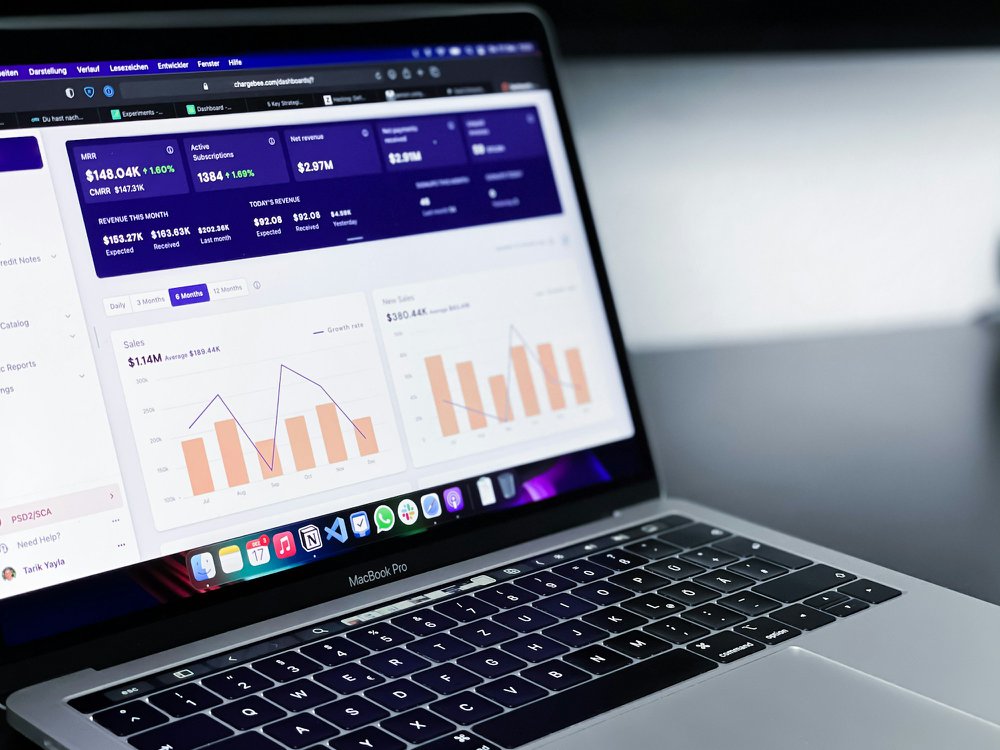The landscape of video SEO is rapidly evolving as we approach 2026. With video content expected to dominate internet traffic, search engines now use advanced AI to analyze and rank videos across platforms. Success requires mastering technical SEO, AI-driven content creation, and platform-specific strategies.
This guide provides key tactics to help you optimize your videos for maximum visibility and dominate search engine results in 2026.
What is Video SEO in 2026

Video SEO has evolved significantly from its origins as basic YouTube optimization. In 2026, it involves advanced AI analyzing video content, voice search optimization, and cross-platform strategies to boost visibility and rankings. Creating high quality videos that appeal to both viewers and algorithms is essential.
Key aspects of Video SEO in 2026 include:
- AI-powered analysis of visual elements, audio quality, and user engagement.
- Optimization for voice search with conversational, long-tail keywords.
- Cross-platform performance across YouTube, TikTok, Instagram, LinkedIn, and more.
- Embedding videos increases chances of ranking on Google’s first page by 53%.
- YouTube videos appear in 70% of top 100 Google search results for commercial queries.
- Crafting content that resonates with both humans and machine learning algorithms.
- Importance of metadata, video titles, descriptions, and thumbnails for SEO success.
- Leveraging user engagement metrics like watch time and session duration.
Advanced Keyword Research for Video Content

Effective keyword research for video content in 2026 requires advanced tools and a strategic approach that goes beyond traditional methods. Leveraging AI-powered platforms and understanding platform-specific nuances can help you identify high-traffic, high-intent keywords that drive video rankings and engagement.
Key tips for successful video keyword research:
- Use AI tools like ChatGPT, VidIQ Pro, and TubeBuddy to identify high-traffic, conversational long-tail keywords tailored to platform-specific algorithms.
- Analyze competitor videos to find content gaps with low competition and high traffic potential.
- Create keyword clusters for video series and playlists to boost session watch time and authority.
- Incorporate location-based keywords for local SEO, targeting “near me” searches and local interests.
By adopting these strategies, you can create a robust video SEO strategy that drives more traffic, improves video rankings, and enhances viewer engagement in 2026.
Intent-Based Video Keyword Strategy

Understanding user intent is crucial for creating video content that ranks well and converts viewers into customers. Video searches generally fall into four categories: informational, navigational, commercial, and transactional. Tailoring your content to these intents can significantly enhance your video SEO performance.
Key insights for optimizing based on user intent:
- Informational Videos: Focus on comprehensive tutorials and educational content. Use keywords like “complete guide,” “step-by-step tutorial,” and provide detailed video transcripts to boost watch time and relevance.
- Navigational Searches: Optimize for users looking for specific videos or YouTube channels by including clear branding and consistent channel messaging.
- Commercial Intent: Create comparison videos, reviews, and product demos targeting keywords such as “best,” “vs,” “review,” and “comparison.” Address buyer concerns with clear value propositions.
- Transactional Videos: Encourage conversions with strong calls-to-action and content that supports purchase decisions.
Video Content Optimization Techniques
The optimization of individual video elements has become more sophisticated, balancing technical factors with user experience. Your video’s title remains the primary ranking factor and should include your primary keyword early while staying compelling and natural. For example, a strong title might be “Video Marketing Strategy 2026: 7 Proven Techniques That Increase Engagement.”
Video descriptions should feature the primary keyword within the first 125 characters to boost SEO and click-through rates. Including detailed, keyword-rich timestamps helps search engines understand your video’s structure and surface relevant segments in search results.

Content Structure and Storytelling
The first 3-5 seconds of a video are vital for retention and ranking, quickly addressing viewer intent with a clear value preview. Use engaging hooks like surprising facts or questions to capture attention.
Pattern interrupts—such as visual changes or audio shifts—help maintain engagement in longer videos, boosting rankings by reducing drop-offs.
Place calls-to-action naturally throughout to encourage likes, comments, shares, and subscriptions without being intrusive.
Creating series and playlists of related videos builds topical authority and increases session duration, signaling quality and relevance to search engines.
Technical Video SEO Implementation

The technical foundation of video SEO involves implementing structured data markup to help search engines understand and categorize your video content effectively. Using VideoObject schema markup with JSON-LD provides essential details such as video duration, upload date, thumbnail URL, and description, boosting your chances of appearing in rich video snippets.
Key technical SEO steps include:
- Add VideoObject schema markup with properties like name (video title), description, thumbnailUrl, contentUrl, uploadDate, and duration.
- Create and submit video sitemaps including metadata for each video via Google Search Console and Bing Webmaster Tools.
- Optimize closed captions and transcripts for accuracy and natural keyword inclusion to improve accessibility and indexing.
- Compress video files using modern codecs (e.g., H.265, AV1) to balance quality and loading speed.
- Implement adaptive bitrate streaming for smooth playback across devices and connection speeds.
Structured Data and Rich Snippets

Advanced structured data goes beyond basic VideoObject markup by incorporating additional schema types like HowTo for instructional videos, Review for product feedback, and Organization for branded content, enhancing SERP appearance.
Optimizing video duration improves user experience and search rankings, as search engines favor videos that match content complexity and audience expectations. Educational videos may be longer, while promotional videos perform better when concise.
Ensure thumbnail URLs use high-quality, descriptive file names, load quickly, meet platform dimension requirements, and use secure HTTPS links for proper indexing.
Integrate review and rating schema to boost SERP visibility and click-through rates by including aggregate ratings and encouraging viewer feedback.
Platform-Specific Optimization Strategies

YouTube optimization in 2026 requires understanding the platform’s multi-format approach, including traditional videos, YouTube Shorts, and live streaming content. Each format has distinct optimization needs and audience expectations.
Key YouTube SEO strategies include:
- Focus on comprehensive topic coverage and detailed descriptions for long-form videos.
- Use trending audio, eye-catching thumbnails, and immediate engagement hooks for Shorts.
- Leverage YouTube Studio analytics to monitor traffic sources, audience retention, and subscriber growth.
- Optimize posting schedules based on viewer behavior insights.
Other platforms require tailored approaches:
- TikTok SEO emphasizes trending hashtags, viral audio, and quick engagement within the first few seconds.
- Instagram Reels and IGTV benefit from cross-posting, optimized captions, location tags, and custom thumbnails.
- LinkedIn videos should target professional audiences with industry-specific keywords and B2B calls-to-action, encouraging discussions and network sharing.

Cross-Platform Content Repurposing
Efficient content repurposing maximizes video production value across platforms. Create a master video and edit it into formats for YouTube, Instagram Reels, LinkedIn, and podcasts.
Optimize aspect ratios for each platform: 16:9 for YouTube, 9:16 for TikTok and Stories, and 1:1 for Instagram feed. Use editing tools that maintain visual quality during reformatting.
Adapt hashtags and captions to each platform’s audience and tone, maintaining a consistent brand voice.
Schedule posts based on audience activity using platform analytics and automated tools to ensure consistent timing.
AI and Emerging Technologies in Video SEO

Artificial intelligence is revolutionizing video creation and optimization, enabling rapid content production and personalized experiences. However, maintaining authenticity and brand consistency is essential to avoid search engine penalties.
Key AI-driven video SEO trends include:
- Automated editing and thumbnail generation for efficiency.
- Predictive analytics to tailor content to viewer preferences.
- Voice search optimization with natural language and FAQ-style content.
- Emerging AR/VR video formats offering immersive experiences.
- Machine learning for personalized video recommendations.
- Automated translation and multilingual SEO to reach global audiences, with human review for accuracy.
Leveraging these innovations while focusing on quality and authenticity will help your videos rank higher and engage viewers effectively in 2026.
Interactive Video Elements

Clickable video elements and interactive features are key ranking factors, boosting engagement and user experience. Use cards, end screens, and polls to encourage participation and extend session duration.
Shoppable videos link content directly to e-commerce, improving conversions and ROI. Optimize product descriptions with relevant keywords while keeping language natural.
Interactive polls and quizzes increase dwell time and provide audience insights, guiding future content strategies.
360-degree videos and spatial audio offer immersive experiences that stand out, driving higher engagement and premium search positioning.
Video Performance Analytics and Optimization

Advanced YouTube Analytics interpretation is essential for optimizing video SEO and improving search rankings. By understanding key metrics and using data-driven strategies, you can enhance your video performance and maximize ROI.
Key aspects to focus on:
- Monitor audience retention rates, click-through rates from YouTube's search results, and subscriber growth as primary success indicators.
- Use traffic source data to discover how viewers find your videos and adjust your strategy accordingly.
- Set up Google Analytics 4 video tracking to measure video engagement and its impact on business goals.
- Analyze user behavior on embedded videos with heat mapping tools like Hotjar or Crazy Egg to optimize placement and engagement.
- Conduct A/B testing for thumbnails, titles, descriptions, and video lengths to identify what resonates best with your target audience.
- Measure ROI by linking video performance metrics to business outcomes such as conversion rates and customer lifetime value.
Key Performance Indicators (KPIs)

Click-through rate optimization is vital for video discoverability and ranking. CTRs above 5% on YouTube usually indicate effective thumbnail and title design. Regularly test different thumbnails and titles to boost CTR.
Analyzing average view duration and audience retention reveals content quality and viewer satisfaction. Retention rates over 60% often lead to higher rankings and more promotion. Use retention data to identify and improve weaker segments.
Engagement rates include likes, comments, shares, and platform-specific actions. High engagement signals quality to algorithms, increasing chances of appearing in recommended feeds and search results.
Tracking conversions from videos requires proper attribution and clear goals. Monitor actions like signups, purchases, and demo requests to measure ROI and guide content strategy.
Video Distribution and Promotion Strategies

Email marketing integration with video content can significantly increase reach and engagement rates. Embedding video thumbnails in email campaigns and segmenting email lists based on viewing behavior helps deliver targeted content. Personalized video messages also boost open rates and click-through performance.
Key social media promotion strategies include:
- Cross-promoting videos across multiple platforms.
- Creating teaser clips to drive traffic to full videos.
- Engaging actively in comments and discussions.
- Collaborating with influencers aligned with your target audience.
- Encouraging user-generated video content and testimonials for authentic social proof. For more guidance, see social media video production.
Link Building for Video Content

Guest posting strategies with video content integration can earn high-quality backlinks and expand your audience. Offer video as bonus material for guest posts, create video versions of popular written content, and pitch video-first content to multimedia-focused publications.
Optimizing press releases with video can generate media coverage and authoritative backlinks. Create newsworthy videos around industry trends or company announcements, and embed videos with links to boost traffic and visibility.
Cross-promotional video campaigns through partnerships with complementary businesses or experts can increase reach and build valuable link relationships.
Identify resource pages curating valuable video content in your industry and pitch your videos for inclusion to gain quality backlinks.
FAQ
How often should I update my video SEO strategy in 2026?
Video SEO strategy should be reviewed quarterly to account for algorithm changes and emerging trends, with monthly optimizations based on performance data. Monitor platform announcements, algorithm updates, and competitor activities to identify necessary adjustments. However, avoid making frequent dramatic changes that could disrupt established performance patterns.
What’s the ideal video length for SEO in 2026?
Video length should match audience expectations and content complexity rather than following arbitrary guidelines. Educational content performs well at 8-15 minutes on YouTube, while social platforms favor 15-90 second videos. Analyze your audience retention data to identify optimal lengths for different content types and platforms.
Should I focus on YouTube or TikTok for better SEO results?
Multi-platform strategies provide better long-term SEO results than focusing on a single platform. YouTube offers broader reach and longer content lifespans, while TikTok provides viral potential and younger audience access. Allocate resources based on where your target audience is most active and engaged.
How do AI-generated videos affect traditional video SEO rankings?
AI-generated videos are evaluated based on the same quality and relevance criteria as traditional videos. Search engines prioritize helpful, accurate content regardless of creation method, but authenticity and brand consistency remain important factors. Use AI tools to enhance rather than replace human creativity and expertise.
What’s the biggest video SEO mistake to avoid in 2026?
The biggest mistake is prioritizing search engine optimization over user experience and value creation. While technical optimization remains important, search engines increasingly reward content that genuinely helps viewers achieve their goals. Focus on creating valuable content first, then optimize for discoverability and technical performance.









